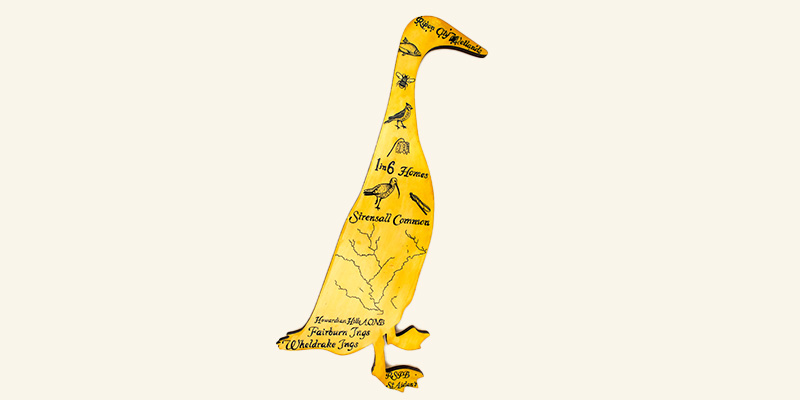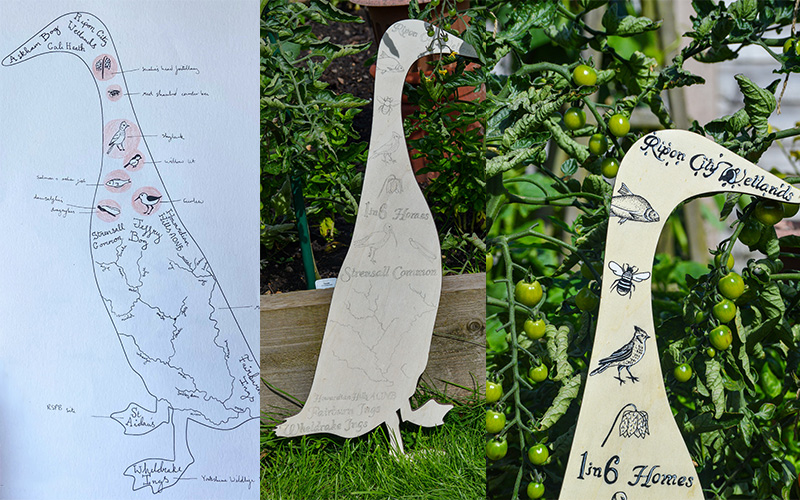
Climate change
This duck was created by Shannon Reed.
My duck design explores how an increase in flooding in our local area could affect wildlife. The design shows all rivers within 20 miles of York, such as the Ouse, the Derwent, and the Foss.
I have written some names of Yorkshire Wildlife Trust and Royal Society for the Protection of Birds (RSPB) sites within the same radius, and illustrated some species that may experience decline if there is an increase in flooding.
My first step was to do some research about climate change and its local effects, and I was very grateful to receive some interesting information from Yorkshire Wildlife Trust.
Once I had an idea of what species could be negatively affected, and a list of RSPB and Yorkshire Wildlife Trust sites within 20 miles, I was able to plan my design.
I planned my design on A4 paper using a Long Boi template. I then transferred my design onto the Climate Change Duck in pencil before using paint marker pens to bring it to life.

One piece of research that helped inspire this piece was a 2015 report published by Natural England in partnership with University of York, British Trust for Ornithology, the Centre for Ecology and Hydrology and the RSPB. The report assessed the risks and opportunities for wildlife in the UK as a result of climate change.
Climate change is a key focus for the Department of Biology, from a conservation and biodiversity perspective as a result of environmental change, in terms of the impact on sustainable food and fuel for the world, and in the intersection with health and disease.
Study with us
Students in the Department of Biology have the opportunity to address grand challenges such as climate change in taught modules and final year research projects across a range of specialisms. The University of York also offers interdisciplinary modules on the future of food, the climate crisis and environmental sustainability.